Natural Flood Management with the Sussex Flow Initiative
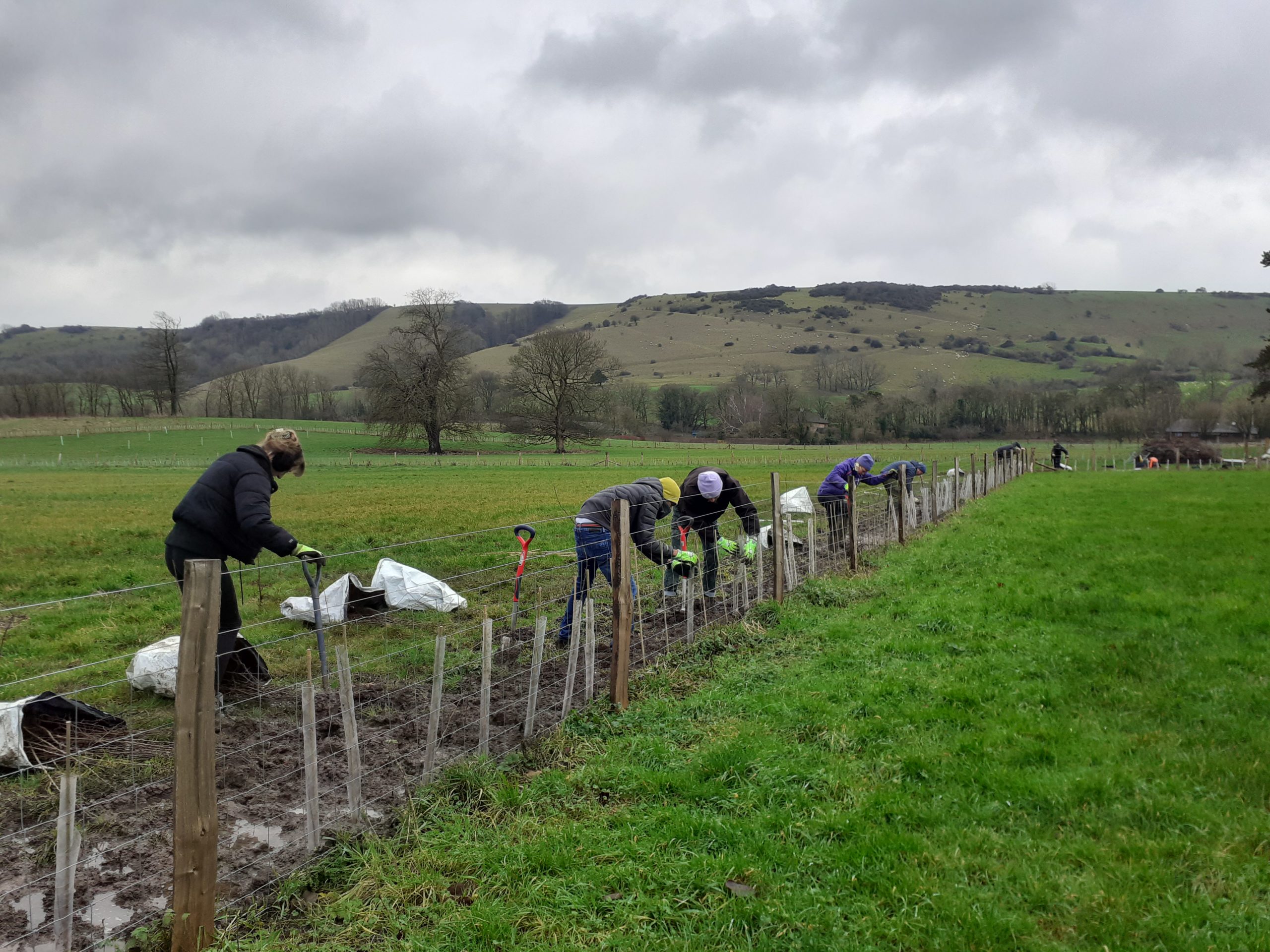
On the 16th of January four members of Groundsure joined the Sussex Flow Initiative (SFI) for a day of Hedgerow planting at the Middleton Estate in Westmeston, East Sussex.
The SFI, formed in 2012, is an organisation that works with Natural Flood Management to help mitigate and reduce flood risk. Through measures such as leaky dams, restoring washing land meadows, and the aforementioned hedgerow planting undertaken in this project.
When arriving we were met with a beautiful views of Ditchling Beacon, the rest of the friendly volunteers, and the wettest mud any of us had ever seen before.
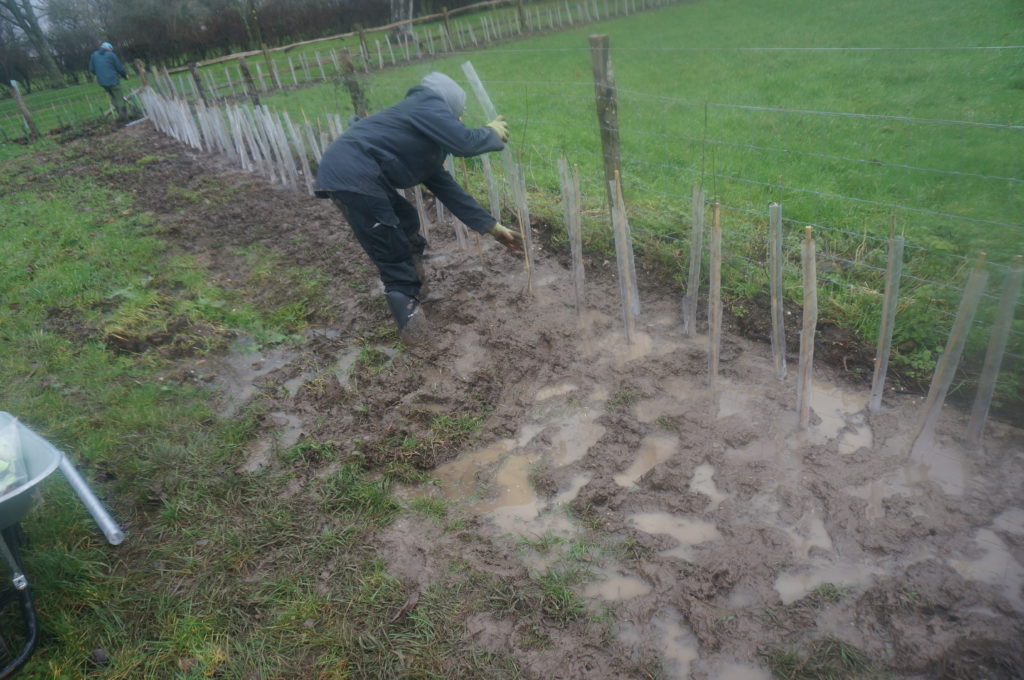
Not to be deterred we donned gloves, grabbed spades, and tackled the mud and puddles of standing water. The land owner had foresight to soften the strip we would be planting to allow for easier planting. Though they didn’t expect such a large quantity of rain to fall, this had the effect of having more water than mud in some places.
Bravely battling through, the team of 10 managed to plant the saplings, while not losing any boots or gloves to the almost swampy conditions! After a well deserved lunch we were treated to some sun, a dry area to plant, and great views of the side of sheep dotted countryside while we worked.
The only downside was what the mud lacked in standing water, it made up for in stickiness, instantly clinging everything it touched, making our feet twice as heavy, as soon any step was taken. Though not to be deterred we cracked on and got another row of saplings planted. With the rest left for tomorrow’s volunteers to finish off.
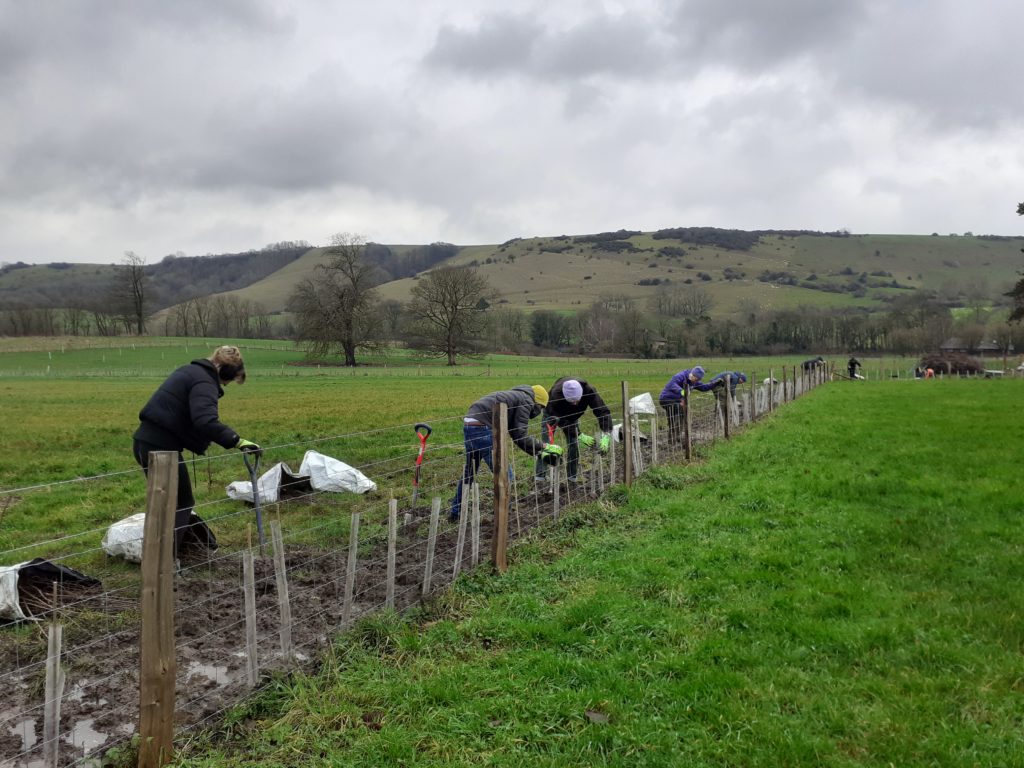
The hedgerow we planted was a double line of a mixture of native species. Sam Buckland, the organiser of SFI had set up bags of saplings premixed so we could grab from the bag and the different species would be spread throughout the hedgerow. This helps the hedge take more natural form, avoiding areas of monoculture.
The hedgerows provide many benefits, from the principal benefit of helping slow the flow of surface water and increasing infiltration. Which can help spread out peak flooding flow reducing the likelihood of flooding events further downstream, along with providing environment and ecological benefits. The hedgerows create habitat, food, and shelter for a variety of wildlife, as well as acting as corridors linking larger habitats. In this case a help to interlink wooded areas spread between the fields.
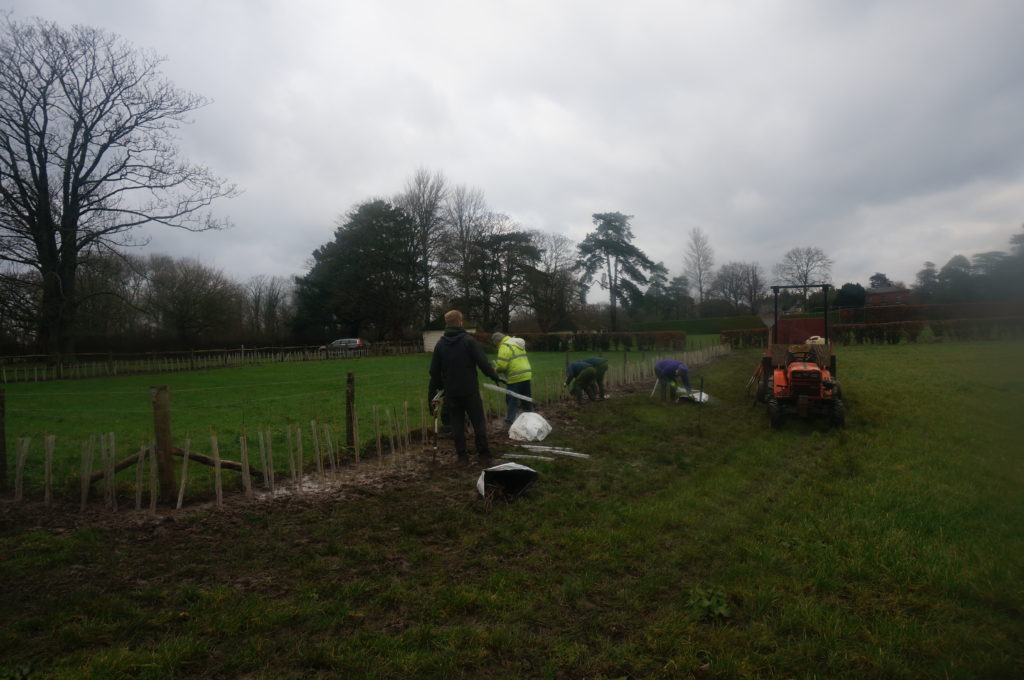
The topic of NFM in the River Ouse catchment is something that I have a lot of vested interest in. Having written my masters thesis on the using Geographical Information Systems to assess the potential for NFM in the River Ouse catchment.
It was a great opportunity to get out and transition from desk based study, to the practice applications of what I had been studying. A chance to fully explore the whole process, starting with desk based study, to the physical implementation. Above all it was great to get out of the office and into the Great British countryside and help improve the natural environment of this small part of Sussex.
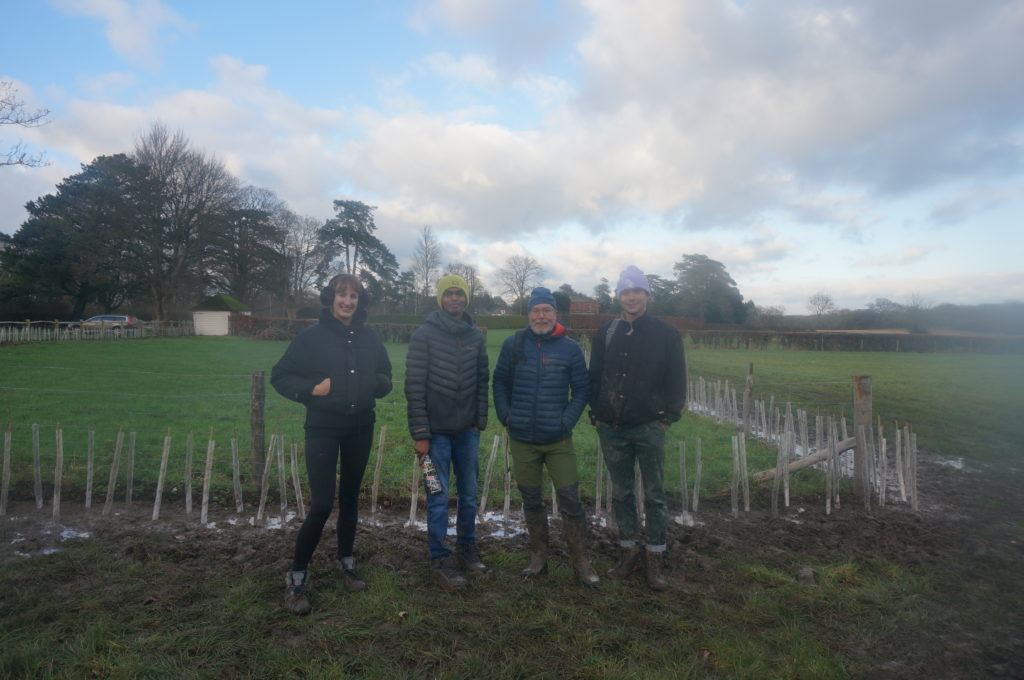
To find out more about the Sussex Flow Initiative and all their current projects, visit: http://www.sussexflowinitiative.org/
Date:
Jan 31, 2023
Author:
Matthew Foster

